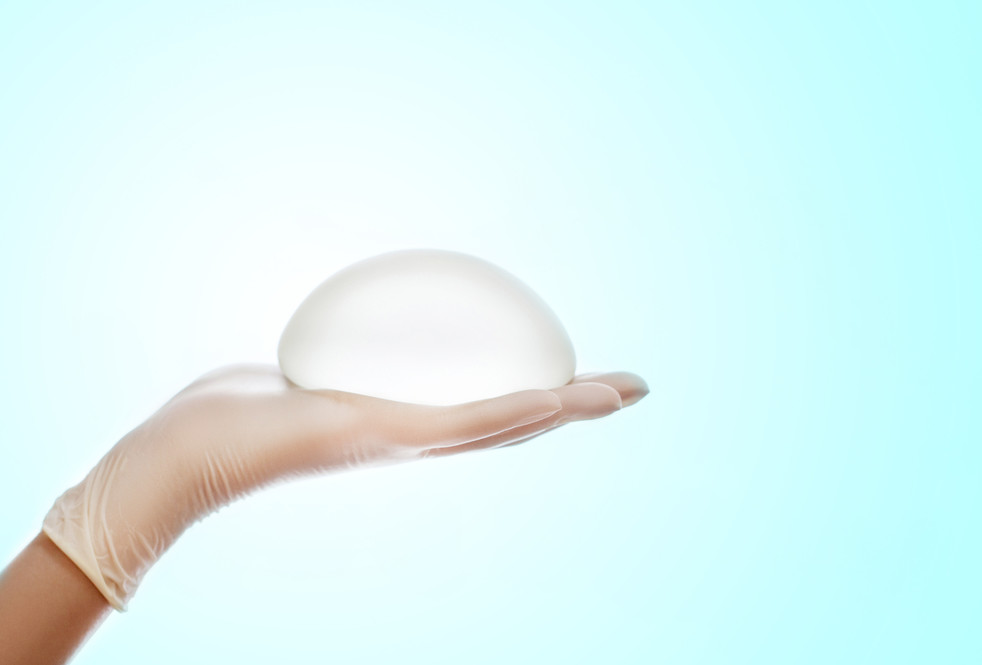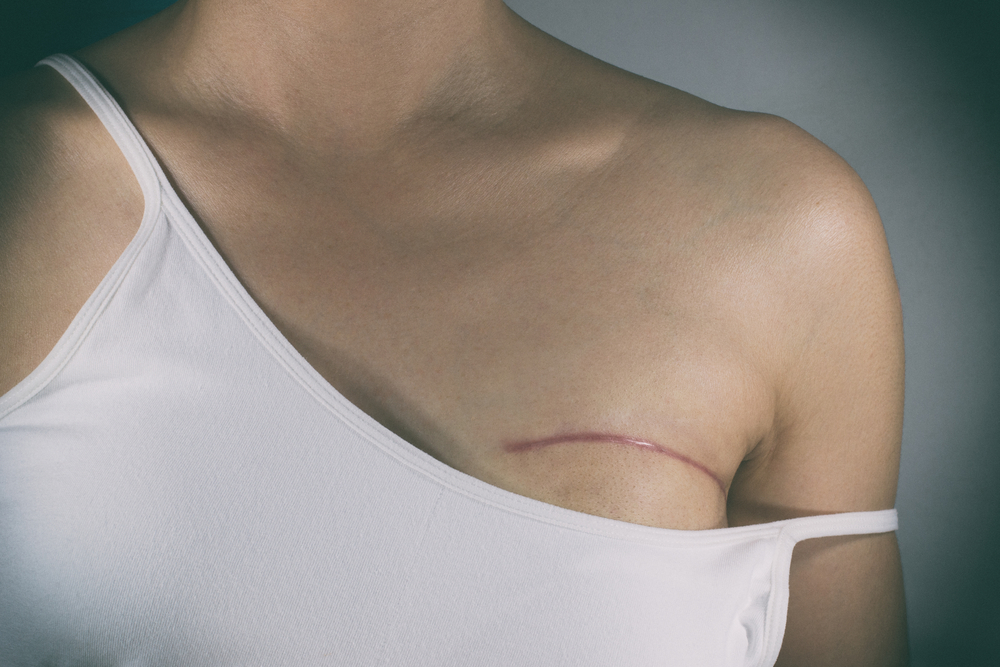Once you have committed to breast augmentation surgery, there’s another important decision to make: What size implants should you get?
The breast implant size that you choose should reflect both your aesthetic goals and lifestyle. Your decision must also factor in long-term considerations such as your health, comfort, and the aging process.
Improperly fitted breast implants produce poor results — diligently carrying out the breast implant sizing process prior to surgery will ensure you enjoy the outcome. As a general rule, very large breast implants look both unnatural and can pose risks, causing problems such as back pain, tissue thinning around the breasts, and sagging.
So, what factors should inform and guide this very personal choice? There are a range of crucial questions you should take into account and discuss with your surgeon before settling on implant size. Some key considerations include:
- Do I want a natural look, a slightly augmented look, or an obviously augmented look?
- How will my breast augmentation impact my lifestyle?
- How will my implants affect my bra and clothing choices?
- How will my breast implants affect the health of my breasts?
- Will my breast implants put me at higher risk of requiring mastopexy later in life?
- Will the size I choose now still make me happy in another ten to twenty years?
Consultations with a board-certified plastic surgeon will help you make the right choice, and ensure that you get the results you deserve and desire. Properly fitted breast implants that are proportional and balanced for your height and body type are essential for a satisfying outcome.
Initial considerations: important questions to ask yourself
Before you venture into the more pragmatic aspects of selecting your augmentation size — such as trying on implants or determining measurements — working through some of these preliminary considerations can be immensely helpful.
What kind of look are you hoping to achieve?
Breast implants fall into two general categories: those that are natural-looking, and those that are not.
In the last few decades, there has been a general shift towards a natural look that helps the patient look like a fuller version of themselves. A competent, plastic surgery expert can help you achieve fabulous natural results.
One of the most common mistakes women make when they commit to breast augmentation surgery is succumbing to the desire for dramatic results, which means getting implants that are too large to look natural. As a result, the “boob job effect” is obvious.
While many women feel excited about the prospect of significantly larger breasts, most are not looking for obviously fake breasts. Your surgeon can guide you towards beautiful cleavage that doesn’t appear augmented or fake.
What kind of lifestyle do you have?
If you lead an active lifestyle, then knowing how implants may impact your regular exercise is crucial. The larger the implant, the heavier the weight of the implant. Doing the Rice Test or trying on implants for size can help you realize the impact that the implant will have on your physical activity.
Larger implants move more during certain activities such as jogging or running. This can, obviously, be distracting or uncomfortable. If you enjoy a range of exercise on a regular basis, or participate in any extreme forms of fitness, it is a good idea to share this information with your surgeon so they can better suggest an implant size for your active lifestyle.
What are the risks associated with larger implants?
Unfortunately, very large implants come with a price. Implant sagging, tissue thinning, ripples beneath the skin, and premature ageing of the breasts are some of the complications that can arise as a result of excessive breast augmentation.
From an aesthetic perspective, oversized implants can spill into the middle of the chest or into the armpit region. They may also project too far outwards, known as the “torpedo effect.” Revision surgery cannot always address the complications that could arise as a result of overly large breasts, meaning that the issues could be permanent.
Many patients who are contemplating breast implant surgery feel compelled to ensure their investment is worthwhile by asking for larger implants than their surgeon may recommend.
Rest assured that your surgeon has experience selecting the right size to meet your goals without going outside of the range that is proportional to your body. Being aware of cases where women have opted for excessively large implants, and the complications that have resulted, can also help inform your choice.
What will happen to your breasts as you age?
When you have committed to breast augmentation surgery, it can be tempting to think about the breasts that you want right now. Unfortunately, right now will not last forever, so it is important to consider how your chest will look in the long term.
As you age, your implants will also age and change. The ligaments that support the breasts lose elasticity and fatty breast tissue loses some of its natural volume. This results in breasts that hang a little lower and appear flatter in profile.
With this in mind, very large breasts or those with a high profile — those that project forward and look perky — may feel or look unnatural. When considering your implant size or profile, take your current age into account, and how your implants will look as you get older to avoid having to downsize or change the profile of your breasts at a later date.
The 4 fundamentals of breast implant sizing
Once you’ve devoted some thought to issues such as how implants may impact your lifestyle and your long term goals, it is time to tackle some of the more mechanical elements of implant sizing.
There is no one-size-fits-all implant or a single right implant for your body type. There is a variety of different implants for you to choose from.
In general, implants are made from saline (salt water) or silicone gel — though other more natural breast augmentation options also exist. Both saline and silicone implants come with their own advantages and disadvantages.
Saline breast implants feel similar to water balloons, while silicone feels closer to natural breast tissue. It is important to note that silicone breast implants require MRI exams at regular intervals after surgery to check for leaks.
Additionally, implants are available in two different shapes: the more traditional round breast shape and the newer teardrop shape, also referred to as gummy bear implants.
Wearing implants in your bra or taking measurements of your breasts and looking at before and after photographs of women who have undergone augmentation surgery can help you gain valuable insight into your needs. This is a great way of helping to decide the right implant size and shape for you.
There are the four crucial factors to consider during the sizing process: volume, profile, dimensions, and breast tissue thickness.
1. Volume
To the surprise of many women, breast implants are measured in cubic centimeters (cc), not cup size. As a rule, bra cup size is a relative and often imprecise measurement and can vary widely between bra manufacturers.
For example, a Victoria’s Secret C cup may more closely approximate Playtex’s B cup. Cubic centimeters provide an exact measurement of implant volume.
It can be challenging to conceptualize exactly the extent to which an implant of 330 cc will augment your breast, which is why trying implants on for size can be so useful. Implants can range from 100 to 1000 cc, but generally most women opt for 300-400cc implants.
2. Profile
Profile refers to the amount of “projection” that an implant has. Implants can be grouped into low, moderate, mid-range, and high implant profile styles.
A low profile implant will be more subtle with less projection, while a moderate-profile implant will be noticeable. High profile implants enable you to have greater volume in a narrower width. Your preference regarding profile will most likely correspond to whether you are looking for a more natural look or an obviously augmented look.
It is important to note that saline and silicone implants do not perfectly correspond in profiles. A low profile saline implant is closer in projection to a moderate silicone implant. If you have a broad chest, gaining the profile you desire you may require a larger implant of greater width to avoid a ‘ball in sock’ appearance.
Your surgeon can guide you regarding the factors that need to be taken into consideration. Trying implants on and handling them during pre-operative consultations also allows you to gain a real sense of how these profiles may feel on you.
3. Dimensions
The diameter and width of your breasts and chest are vital considerations that will inform your future implant size.
Width is the key dimension for fitting breast implants to your body properly. Breast width — typically calculated in centimeters — is measured in a straight line from the outer edge of your breast next to your arm to the inner edge of the breast or the point where cleavage meets. The tape measure is not curved around the arc of the breast in this measurement, but pulled tight across a flat plane.
Most women’s breasts measure between 11 cm and 14 cm wide. Most surgeons recommend an implant that is slightly narrower or the same width as your current breast width.
If your breast width measures 13 cm, then an implant with a diameter of 13 cm or slightly less, such as 12.5 cm, is a good fit. As a general rule, narrower implants are typically recommended by surgeons.
4. Breast tissue thickness
The thickness of your breast tissue is another issue that impacts your implants. Women with thicker breast tissue can generally accommodate wider implants than women with thinner breast tissue.
Placing excessively large implants under thin breast tissue can sometimes cause complications such as visible implant ripples. This is because there is less padding covering the implant which causes the skin to stretch. Your surgeon will measure and assess your soft tissue thickness to help determine the right implant fit.
Breast tissue thickness can also factor into your selection of implant shapes. There are two implant shape options that you can choose from: teardrop implants, which first became available in 2012, and the traditional round implants. Teardrop implants come in a range of different teardrop shapes that can fill out different elements of the breast.
Round implants are often more appropriate for women with more than 2 cm of natural breast tissue. The excess tissue sits comfortably over the implant, giving it the appearance of a teardrop shape after surgery. Teardrop implants typically work well for women with less breast tissue, offering them a more natural appearance.
The usefulness of before and after photos
Plastic surgeons think of breast augmentation in terms of implant volume (330cc, 360cc, etc.), while patients tend to think of augmentation in terms of cup sizes. This can sometimes create the potential for miscommunications or difficulty articulating exactly the look or increase in breast size that you want.
An incredibly useful exercise that can help with communicating your goals is to look through before and after photos of patients who have undergone a breast augmentation procedure. You can do this during a preoperative consultation with your surgeon and simply express your thoughts about the size and shape of the breasts in the images.
Based on the images, the surgeon can recommend possible implant volumes to try on for size, and offer advice.
Looking at photos is also useful because it can help you to realize that there is not only one perfect breast implant size for you, but a range of suitable sizes. In the end, it’s up to you to determine which size you like best.
Sizers: trying on implants
Trying on different implants offers an immediate way to gauge the size that feels most comfortable to you. During consultations and pre-operative appointments at your surgeon’s office, you will have the option of trying on implants of different volumes, materials, and profiles.
The most effective way to try on breast implants is to select a bra size that you would like to fit, and place implants inside it to simulate an augmentation. Test a variety of shirts over the top so you can decide whether you like the look and feel of the implants. Experiment with different sizes until you settle on the right implant for you.
There is, however, one caveat to bear in mind with this method. While trying on implants is an undeniably effective way to get a sense of the size that suits you best, it can only ever give a rough idea of the final results. Your breast size will appear different once the implants have been surgically placed inside your breasts.
Superimposing the implants on top of your breast tissue inside a bra essentially stacks one sphere on top of another, resulting in an exaggerated projection of the breasts. As a result, women sometimes select smaller implants than they are looking for.
Another way in which you can “try on” implants at home and get a sense of implant weight is by carrying out the rice test. Once you have made your own homemade implant sizers from pantyhose and rice, the implants can be placed inside a sports bra and tried on. You can add or remove rice from the pantyhose to experiment with larger or smaller implant volumes.
Sometimes, your choice may come down to two implant sizes. In these cases, the surgeon may recommend trying on the implant option during surgery using temporary breast implant sizers. The temporary implant will be placed in your breast pocket and assessed, and the surgeon will then make a decision about the implant that best fits your goals and your body type. The sizer implant is then removed and the permanent implant placed inside the breast.
Size is important… but so is balance
One of the most important aspects of the pre-surgery planning phase is determining the right implant size for the patient’s individual body type and measurements. To put it plainly, it’s not all about having an ample bosom — it’s also about having a breast size that is balanced with the rest of your body.
To determine the right fit for a patient, surgeons will considers the following measurements:
- Breast width
- Breast height
- Ribcage width
- Shoulder width
- Weight
- Height
Finally, they will also assess the patient’s body contour, looking at her front and side view. This is where balancing out the top with the bottom is crucial.
You may have also heard of 36-26-36, a woman’s “ideal” breast-waist-buttocks measurements. Scientists have actually conducted several studies on what the most attractive measurements are for women in the Western world.
One social experiment found that the waist-to-hip ratio (circumference of waist/circumference of hips) should be about 0.7, and the waist-to-chest ratio (circumference of waist/circumference of chest) should be about 0.67, with an 18.9 BMI.
The truth is that each individual’s body and goals are different, so it wouldn’t be fair or logical to even attempt to apply these idealistic standards to every patient. After all, they are ideals and plastic surgery is not about perfection — it’s about improving what you have.
However, what we can draw from these values is the concept of proportions: consider the circumference of your hips and buttocks when choosing your implant size.
Generally speaking, the circumference of the breasts should be close to or equal to that of the buttocks, and the waist should have the narrowest width, giving you that hourglass figure many men and women find most attractive.
The bottom line
The size of your new breasts represents a very personal choice. While the decision ultimately rests with you, don’t forget that your plastic surgeon is there to help support and inform you throughout the surgical process.
Having clear goals in mind, communicating with your doctor, and having realistic expectations will help to leave you satisfied with your end results.
» Schedule a breast enhancement consultation by using Zwivel’s online directory to locate experienced plastic surgeons in your area.









